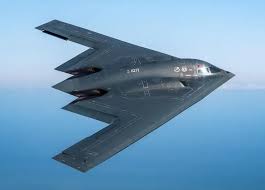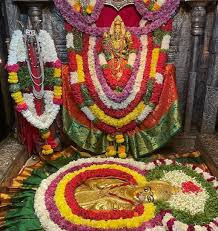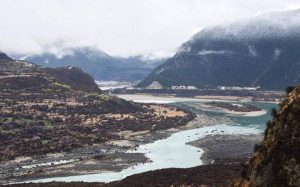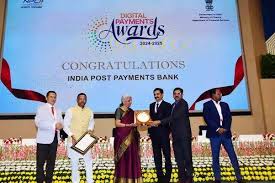Today’s Current Affairs: 21st June 2025 for UPSC IAS exams, State PSC exams, SSC CGL, State SSC, RRB, Railways, Banking Exam & IBPS, etc
Table of Contents
B-2 Spirit Stealth Bomber:

The United States recently deployed its B-2 Spirit stealth bombers on Saturday to carry out precision airstrikes on Iran’s nuclear infrastructure.
- B-2 Spirit Stealth Bomber is a United States long-range stealth bomber.
- It first flew in 1989 and was delivered to the U.S. Air Force starting in 1993. There are currently 19 in service.
- It is built and maintained by Northrop Grumman Corporation.
- The U.S. B-2 costs about $2.1 billion each, making it the world’s most expensive military aircraft ever built.
- It is known for its low observability, all-altitude capability, and ability to penetrate the most sophisticated air defenses.
- Due to its low-observability engineering, the fighter is difficult to detect by conventional radar.
- Its flying-wing design, radar-absorbent materials, and reduced infrared signature result in a radar cross-section of about 0.001 square meters—comparable to that of a small bird.
- The bomber is flown by a crew of two, the pilot and the mission commander.
- Power is provided by four turbofan engines.
- It has a top speed of 628 miles (1,010 km) per hour.
- The advanced jet also has several other features, including its capability to travel up to 6,000 nautical miles (11,112 km) without refueling and massive arsenal capacity and ability to perform operations freely even at high altitudes.
- With aerial refueling, the B-2 can reach virtually any target worldwide.
- Its payload capacity of more than 40,000 pounds (18,144 kg) allows the aircraft to carry a diverse array of conventional and nuclear weapons.
- The bomber’s internal weapons bays are specifically designed to maintain stealth characteristics while accommodating large ordnance loads, which could include two GBU-57A/B MOP (Massive Ordnance Penetrator), a 30,000-pound precision-guided “bunker buster” bomb.
- MOP represents the largest conventional bomb in the U.S. arsenal, specifically engineered to defeat hardened underground bunkers.
- B-2 bombers are the only plane capable of carrying the MOP.
Balkampet Yellamma Temple:

Recently a donation of Rs 1 crore was made to Balkampet Yellamma Temple in Telangana.
- Balkampet Yellamma Temple is a Hindu temple located in Balkampet, Hyderabad, Telangana.
- It is dedicated to Goddess Yellamma, considered a form of Renuka, the mother of Lord Parashurama.
- It is also known as Yellamma Pochamma Temple.
- Its origins trace back to the 15th century when a rock bearing the sculpture of the goddess was discovered 10 feet underground during a well-digging excavation.
- The immovable idol was seen as a divine sign, leading to the construction of the temple on the same spot.
- Over centuries, the temple has undergone several renovations, with the current structure established in 1919.
- Two major festivals celebrated at the temple are Bonalu Jathara and Yellamma Kalyanotsavam.
- The temple is built in the Dravidian style of architecture and is one of the oldest temples in Hyderabad
- The idol was found 10 feet deeper to the ground and was built as a huge temple.
- The temple has a big temple tower, or raja gopuram. There are several inscriptions and carvings on the wall.
- The other shrines inside the complexes are Goddess Sri Pochamma, Goddess Rajarajeshwari, Goddess Nagadevta, and Lord Ganesha.
Samson Option:

As Israel’s conflict with Iran escalates and threats loom from multiple regional actors, the world’s attention is once again drawn to the Samson Option—Israel’s veiled but potent nuclear deterrent.
- The Samson Option is Israel’s presumed doctrine of massive nuclear retaliation in the event of an existential threat to the state.
- The term, drawn from the biblical story of Samson, who destroyed himself along with his enemies, encapsulates the idea of apocalyptic retaliation.
- Though Israel has never officially confirmed its nuclear arsenal, a widely accepted policy of amimut (Hebrew for “deliberate ambiguity”) maintains strategic uncertainty.
- Foreign analysts estimate Israel holds between 80 to 400 nuclear warheads, deliverable via land-based missiles, aircraft, and sea-based systems.
- Like its nuclear programme, Israel has never openly spoken of its so-called “Samson Option”.
- First coined in public discourse through Pulitzer Prize-winning journalist Seymour Hersh’s 1991 book The Samson Option, the doctrine is not a Cold War relic but an active element of Israel’s defence strategy, hinted at over decades by former officials.
- The Samson Option is not designed to deter a nuclear adversary from a first strike or counter strike Israel is the only nuclear-armed state in the region. Rather, its purported purpose is to ensure Israel’s survival.
- Under the Samson Option, nuclear weapons would be deliberately used against a non-nuclear adversary as a last resort to prevent an Israeli defeat.
e-Raktkosh:

The Union Health Ministry is looking at integrating the country’s Rare Donor Registry with the national online platform for blood bank management and blood availability information called e-Rakt Kosh.
- e-Raktkosh is an online blood bank management system implemented under the National Health Mission.
- It is the official portal for all blood-related services in India.
- It provides details on blood availability, blood banks, and blood donation camps across the country.
- More than 3800 blood centers are registered on e-Raktkosh from across the country.
- It has been developed by the Centre for Development of Advanced Computing (C-DAC).
- It has been developed with a modular and scalable approach with configurable rule-based architecture, allowing customization to easily incorporate specific requirements from nationwide stakeholders.
- e-Raktkosh has six major components for management of the blood donation life cycle:
- The biometric Donor Management System for identifying, tracking, and blocking donors based on the donor’s health, donation history, etc.
- It provides features such as blood grouping, TTI screening, antibody screening, component preparation,, as per the defined processes and rules.
- A centralized Blood Inventory Management System for keeping track of the blood stock across numerous blood banks.
- Bio-Medical Waste Management System for disposal of discarded blood and other waste generated during this process.
- Generation of rare blood group donor registries and the generation of regular repeat donors.
- Alert and Notification System.
Net Interest Margin:

State-run lender Indian Overseas Bank (IOB) has taken various steps to offset the impact on net interest margin (NIM) from the repo rate cut affected by the Reserve Bank of India (RBI) recently.
- NIM is a financial metric used to measure the profitability of a bank or financial institution’s lending activities.
- It represents the difference between the interest income generated by the institution’s assets (such as loans and investments) and the interest paid on its liabilities (such as deposits and borrowed funds), expressed as a percentage of the average earning assets.
- It indicates how effectively a bank is generating interest income from its interest-earning assets relative to the interest it pays on its interest-bearing liabilities.
- This metric helps prospective investors determine whether or not to invest in a financial services firm by showing its interest income versus their interest expenses.
- Simply put, a positive NIM suggests that an entity operates profitably, while a negative figure implies investment inefficiency.
- NIM is calculated using the following formula:
- NIM = Interest Income − Interest Expense/Average Earning Assets
- Interest Income: The revenue earned from interest on loans, mortgages, securities, and other interest-bearing assets.
- Interest Expense: The cost incurred from paying interest on deposits, borrowings, and other interest-bearing liabilities.
- Average Earning Assets: The average value of assets that generate interest income, typically calculated over a specific period.
Lenacapavir Drug:

The United States Food and Drug Administration (FDA) approved Lenacapavir (LEN), the most promising HIV prevention medicine to be made so far.
- Lenacapavir is an antiretroviral medicine that is used for HIV prevention as a pre-exposure prophylaxis or PrEP.
- PrEP is a medication that can reduce the risk of HIV infection for individuals who are HIV-negative but are at risk of contracting the virus.
- The results of two key studies have shown that it helps prevent 99.9 percent of all HIV transmission.
- LEN is an injectable PrEP that is to be taken twice yearly.
- It is developed by Gilead Sciences and marketed under the brand name Yeztugo.
- Lenacapavir is a capsid inhibitor, a class of drugs that blocks the protein shell (capsid) the HIV virus needs to replicate.
- Unlike oral PrEP pills that must be taken daily, lenacapavir is administered as an injection once every six months, providing a discreet and highly effective method of prevention.
Subarnarekha River:

Over 50,000 people were affected as a flash flood in the Subarnarekha River caused water to enter their villages in Odisha’s Balasore district.
- Subarnarekha River originates near Nagri village in the Ranchi District of Jharkhand at an elevation of 600 m.
- It flows for a length of 395 km before outfalling into the Bay of Bengal.
- The Subarnarekha (meaning “Streak of Gold”) flows east through a copper-mining region and leaves the Chota Nagpur plateau by the Hundrugbagh waterfall.
- Its principal tributaries joining from right are the Kanchi, the Karkari and the Kharkai.
- The basin is bounded by the Chota Nagpur plateau on the north and the west, by the ridges separating it from Baitarani basin on the south, by the Bay of Bengal on the south-east and by the Kasai Valley of Kangsabati River on the east.
- It extends over States of Jharkhand, Odisha and comparatively smaller part in West Bengal.
- The basin is generally influenced by the South-West monsoon, which onsets in the month of June and extends up to October.
Digital Payments Award 2024-25:

India Post Payments Bank (IPPB) has been conferred the prestigious Digital Payments Award 2024-25 by the Department of Financial Services (DFS), Ministry of Finance.
- It is a 100% Government of India-owned entity under the Department of Posts, Ministry of Communications.
- IPPB was launched on September 1, 2018.
- The bank has been set up with the vision to build the most accessible, affordable and trusted bank for the common man in India.
- The fundamental mandate of India Post Payments Bank is to remove barriers for the unbanked & underbanked and reach the last mile leveraging the Postal network comprising ~1,65,000 Post Offices.
- The operations of IPPB will be on a smaller scale as compared to other banks and will not advance loans or issue credit cards to avoid risk
- It will accept deposits, offer remittance services, mobile payments/transfers/purchases and other banking services like ATM/debit cards, net banking and third-party fund transfers.
- It will accept deposits up to Rs 2 lakh, beyond which the account will be automatically converted into a post office savings account.
- The products and services of the bank will be made available through various mediums such as counter services, micro ATMs, mobile banking apps, messages, and interactive voice responses.
- The IPPB will use Aadhaar to open accounts, and a QR card and biometrics will be used for authentication, transactions, and payments.
51st G7 Summit:

India’s Prime Minister attended the 51st G7 Summit at Kananaskis, Canada. Though India is not a part of the G7 grouping, it has been invited for the global summit each year for the last six years and twelve times in total as an outreach country.
- The President of the European Commission was invited to attend the G7 Summit for the first time.
- Key Outcomes of the G7 Summit:
- Kananaskis Wildfire Charter: It commits to addressing wildfire threats through science-based, local actions and nature-based solutions, aligning with the goal to halt and reverse deforestation and land degradation by 2030 under the Glasgow Leaders’ Declaration (2021).
- G7 Critical Minerals Action Plan: It focuses on diversifying critical mineral production, boosting investment and local value creation, and promoting innovation, building on the 2023 Five-Point Plan for Critical Minerals Security (also endorsed by India).
- The G7 also committed to strengthening the World Bank-led Resilient and Inclusive Supply Chain Enhancement (RISE) Partnership.
- Condemned Transnational Repression (TNR): The G7 condemned Transnational Repression (TNR), which refers to aggressive foreign interference where states or their proxies seek to intimidate, harass, harm, or coerce individuals or communities beyond their own borders.
- Prevent Migrant Smuggling: G7 committed to preventing migrant smuggling through the G7 Coalition to Prevent and Counter the Smuggling of Migrants and the 2024 G7 Action Plan targeting this issue.
- G7 : The G7 (Group of Seven) is an informal forum of the world’s most advanced economies — France, Germany, Italy, the UK, Japan, the US, and Canada.
Ghumot as the state’s heritage instrument : GOA
In 2019, Goa State Cabinet declared Ghumot as the state’s heritage instrument without monitor lizard skin which has sparked an aesthetics debate on folk music.Ghumot (or Ghumat) is a traditional membranophone percussion instrument that features in several religious and cultural practices of Goa.It is made with an earthen clay pot with one side left open and the mouth covered with animal hide, usually that of the Indian monitor lizard (now largely replaced by goat hide). The rim is designed to secure the membrane, and the instrument is often warmed near a bonfire to tighten the skin for enhanced sound.The ghumot player strikes on this tightly tied membrane to create sharp beats. The instrument is also played in a pre-wedding ‘roce’ ceremony of Goan Christians, where the ghumata vazop comes alive.
Centre Launches Gender Budgeting Knowledge Hub:
The Union Ministry of Women and Child Development (WCD), led by Minister Annpurna Devi, launched the Gender Budgeting Knowledge Hub on June 20, 2025. The portal is designed to serve as a comprehensive digital platform to support gender budgeting efforts across central and state ministries, showcasing the Centre’s rising commitment toward inclusive fiscal planning and empowerment of women. The launch coincided with a national consultation held at Vigyan Bhawan, New Delhi, marking two decades of India’s gender budgeting journey.
PNB Supports Martyrs’ Families with ₹17 Crore Aid Under Rakshak Plus Scheme:
Punjab National Bank (PNB), one of India’s leading public sector banks, has extended financial assistance worth ₹17.02 crore to the families of 26 defence and paramilitary personnel who lost their lives in the line of duty. This support was delivered under the bank’s dedicated Rakshak Plus Scheme, which aims to provide critical financial and insurance support to uniformed personnel and their families during times of loss or injury. The initiative stands as a symbol of gratitude and respect for the ultimate sacrifice made by India’s brave soldiers.
MDNIY Launches ‘Yoga Bandhan’ to Strengthen Global Unity:
The Morarji Desai National Institute of Yoga (MDNIY) launched ‘Yoga Bandhan’, a flagship international program under the Ministry of Ayush. As a Signature Event leading up to the International Day of Yoga (IDY) 2025, the initiative brought together yoga ambassadors from 15 countries to strengthen global partnerships in yoga education, diplomacy, and wellness, reflecting India’s continued leadership in promoting cultural unity and holistic health worldwide.




